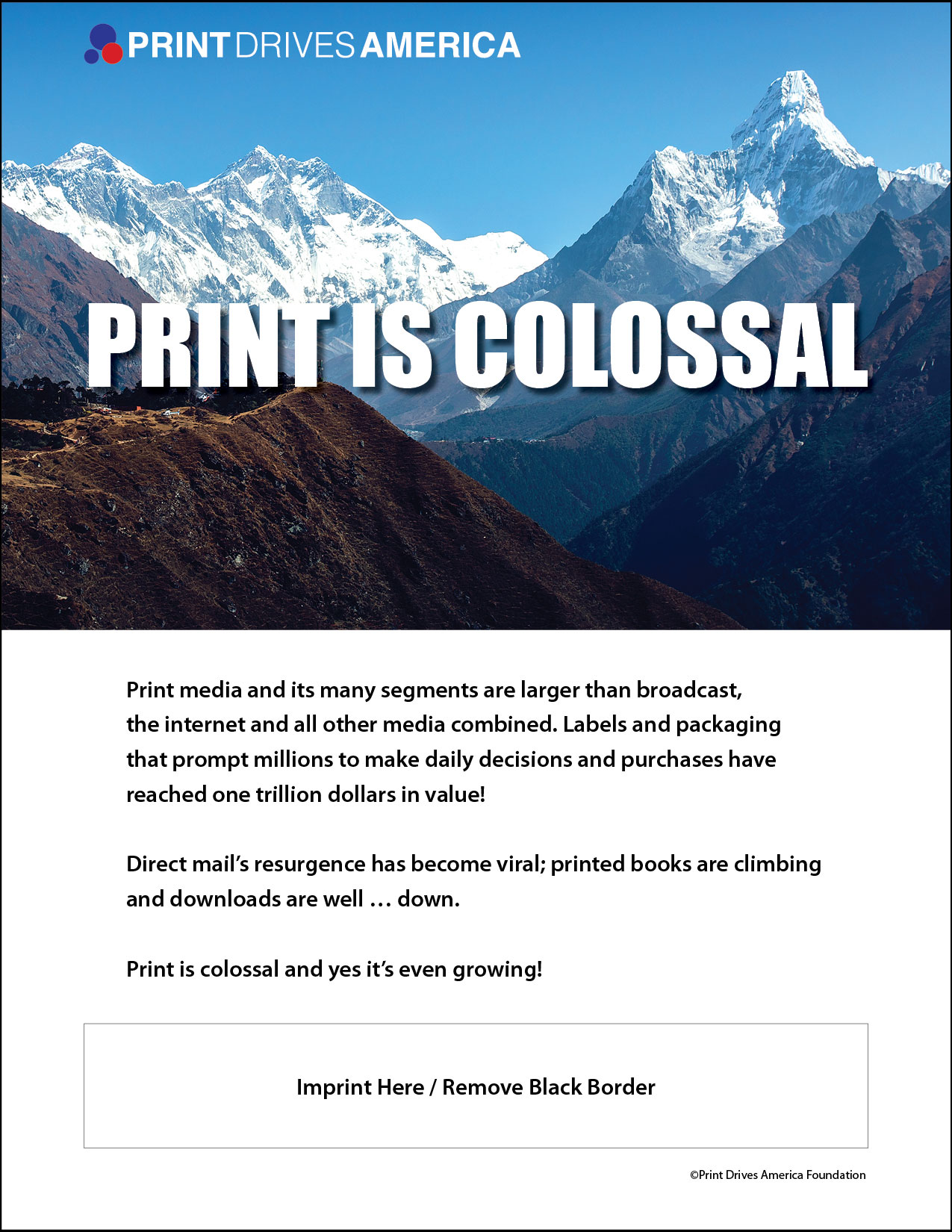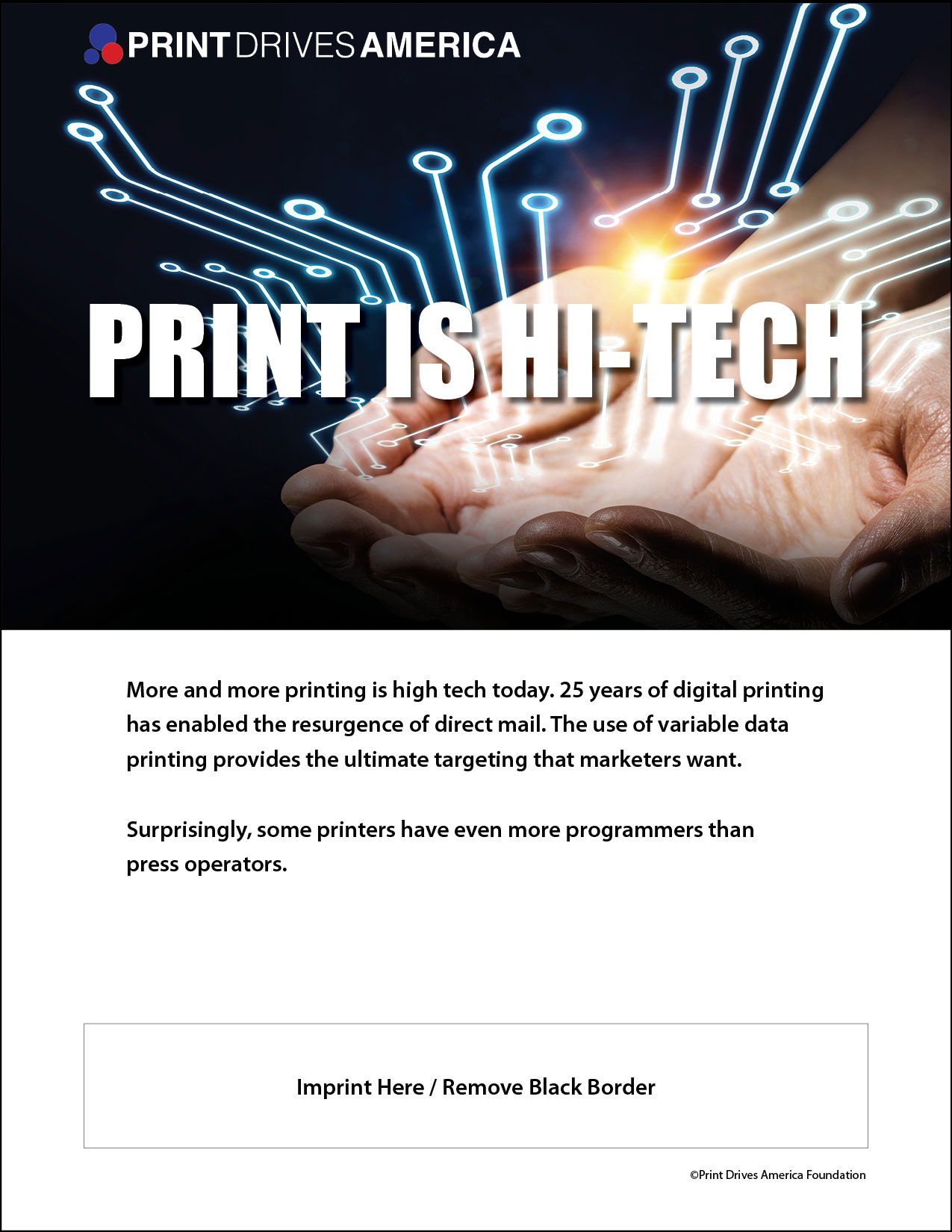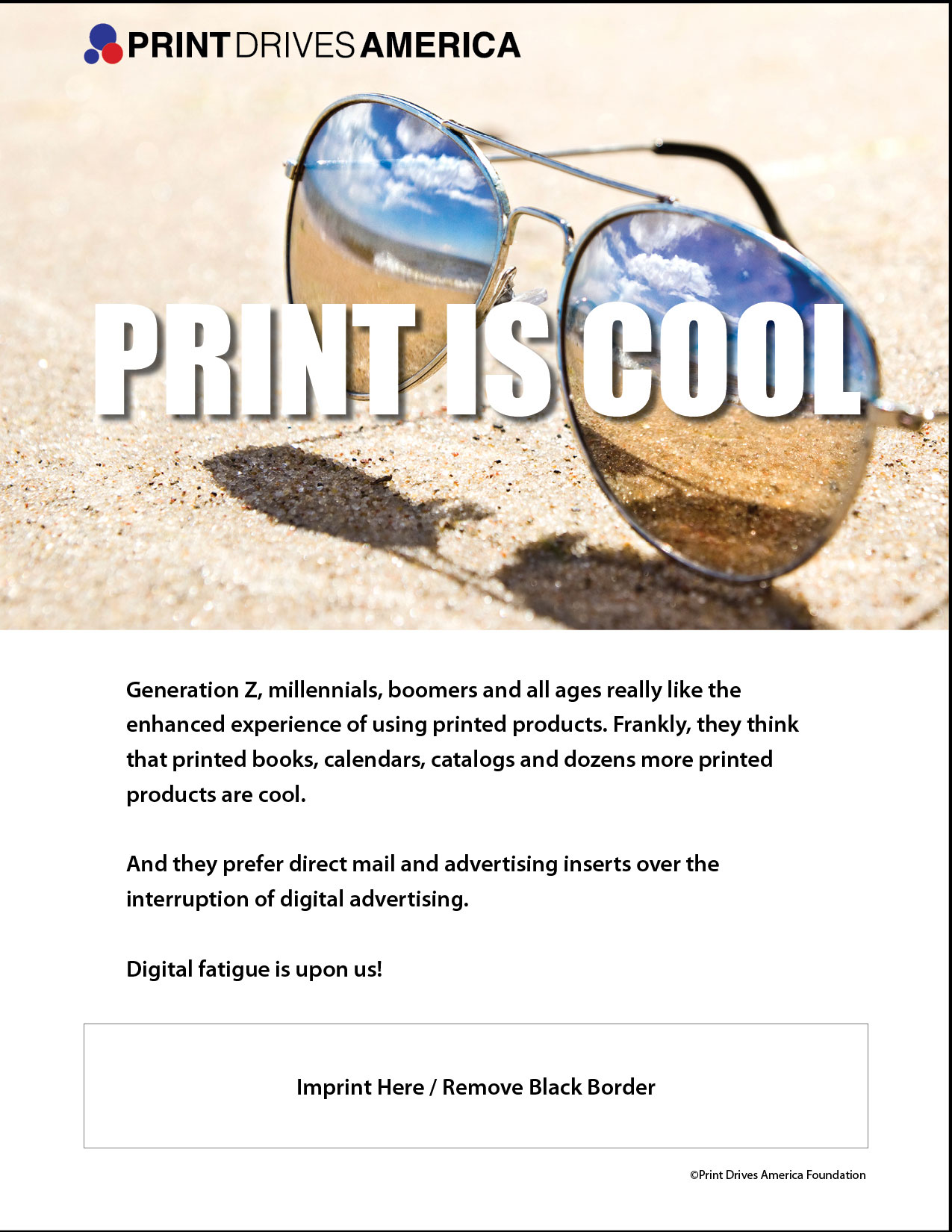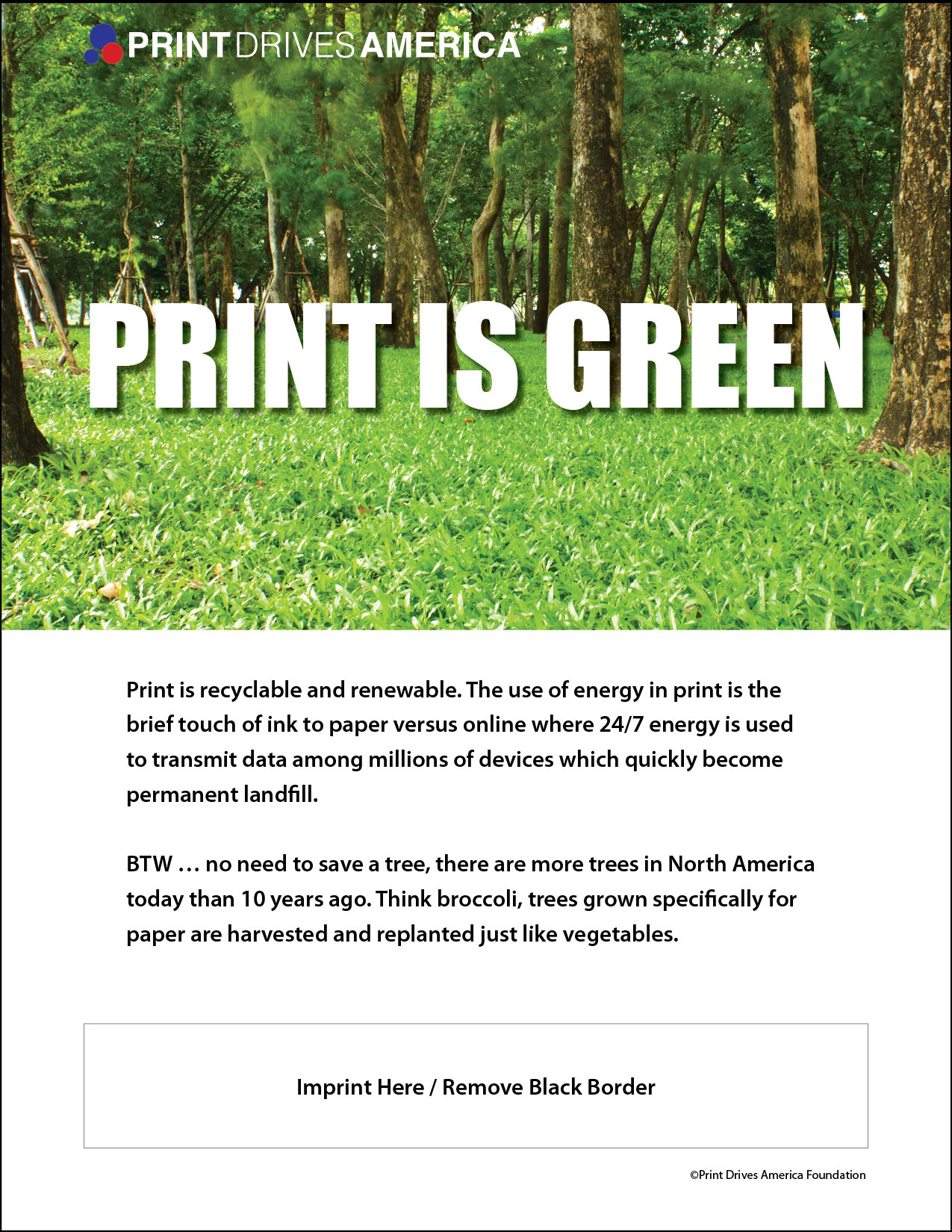By Patrick Henry, Liberty or Death Communications
“I try to do the right things the right way each day.” This simple precept, inherited from his father, has guided Michael Duggal from his challenging early days in the industry to the extraordinary achievements that have earned him the 2021 Print Drives America Franklin Award for Distinguished Service. Mr. Duggal and 2020 honoree Thomas J. Quinlan III will accept their awards at the 68th Annual Print Drives America Franklin Event in New York City on November 17.
challenging early days in the industry to the extraordinary achievements that have earned him the 2021 Print Drives America Franklin Award for Distinguished Service. Mr. Duggal and 2020 honoree Thomas J. Quinlan III will accept their awards at the 68th Annual Print Drives America Franklin Event in New York City on November 17.
Duggal is CEO of Duggal Visual Solutions, one of the country’s premier providers of graphic imaging services. Under his leadership, the company has built an unparalleled reputation for technological capability and creative excellence. It has also attracted national attention for its extraordinary response to the COVID-19 pandemic in New York City, where it transformed itself on short notice into a mass manufacturer of protective gear.
The company, named a Best-in-Class Innovator by Printing Impressions last year, traces its origins to the photo lab that the honoree’s father, Baldev Duggal, opened in Manhattan’s Chelsea district in 1961.
“I was exposed to the industry at a very young age through my father,” his son recalls. “You’d go in with your dad in the morning, and you’d go home at night, so you’d be there all day, and that would be a pretty regular occurrence, because we were a pretty small business when we were growing up. I also saw what it meant to run a small business – bright and early, late at night, to work through the things that all small business owners have to work through.”
A Call from Home
As an adult, Duggal didn’t proceed directly into management of the family enterprise, having moved away from New York to pursue opportunities in other industries. He returned to his roots in 1995 after an appeal from his father, who was dealing with health issues and the pressures of running a conventional imaging business in a rapidly changing market for visual services.
“He basically told me that the financial part of running the business was killing him, and he needed me to come up and help,” Duggal says. “So I had to leave my job in Virginia, break my lease, and then head on up to New York City to help get the finances in order.”
By this point, the company had entered Chapter 11 bankruptcy and was struggling to establish a new identity after many years of being the New York metropolitan area’s premier photo lab. Film was rapidly disappearing from graphic production, and as a result, says Duggal, “the business was now facing the transition that so many companies did not successfully navigate.”
Once Duggal had stabilized its finances, the company emerged from bankruptcy and began to see growth as a more digitally focused operation. In 2002, after steering the company through a recession in the late 1990s, the bursting of the dot-com bubble in 2000, and the 9/11 disaster the year after that, Duggal took over as CEO and began accelerating its transition to the digital side.
“We did it on our terms,” he emphasizes. “We didn’t wait for things to completely stop before we stopped doing them. We moved away from a lot of conventional photographic services earlier on, so that we could focus on what would be the future. And so we were early adopters of a lot of technology.”
Through it all, Duggal never forgot his father’s admonition to excel. “It was his focus on, if you’re going to do something, you might as well be the best,” he says. “To have the best quality – to be relentless in that pursuit.
Nothing but the Best
This explains why Duggal Visual Solutions’ commitment to adopting new printing and imaging technologies is key to its business strategy. “We always want to offer our customers the best possible solution to their needs,” Duggal says. “We never want someone to have to go to someone else and get something better than us. We want to bring innovation to our customers, as opposed to having them force our hand.”
“We were the first company with a drum scanner back in the day,” he remarks. That was just the beginning of a campaign of technology investment that has made the company one of the country’s most multi-capable providers of printing and graphics services, adept at virtually every method of translating visual imagery into physical or digital form.
An equipment list doesn’t tell the whole story of any company, but the inventory at Duggal Visual Solutions demonstrates just how serious the company is about always being out in front with the best.
Among its industry-leading acquisitions are the country’s first HP Indigo 12000 B2-format digital press, which later became the first of its type to be upgraded with HP’s resolution-doubling HD imaging system. The company also hosted the U.S. debut of the Durst Rho 500R grand-format (16′ wide) UV inkjet printer. Last year brought news that Duggal Visual Solutions had become the first provider anywhere in the world to install an HD Landa S10 Nanographic press.
Today the company’s highly diversified production capabilities are spread across nine facilities: two on the West Coast and seven on the East Coast, including its manufacturing headquarters in the Brooklyn Navy Yard. At these sites, says Duggal, “we always try to find through technology and process the better way to do something, and we search that out, because our focus is always on being the best first, not just making the most money.”
Vision vs. Bean-Counting
However, he adds that capital expenditure on this scale is not for the faint-hearted – or for the short-sighted.
“Sometimes our relentless investment and high-quality control standards hurt us financially,” he acknowledges. “But, doing great work is our passion. We’re a creative company staffed by creative and resourceful people, not a private-equity-run or a publicly owned company where they have a quarter-to-quarter mindset.
“We have a long-term vision, and I feel our future is more secure when we’re the best at something, as opposed to just a focus on profitability alone. I believe that by putting our customers first, in the long term the positive results for us will follow.”
“Obviously, you need to perform financially well to survive, but there are some companies where that becomes the only end, and I think that organizationally, those companies start to suffer,” Duggal observes. “Short-term, they can be successful, but long-term, they’ll suffer reputationally.”
Another spur to excellence comes from meeting the high expectations of the company’s A-list clientele, which includes luxury retailers, museums, galleries, sports leagues, event venues, and corporations around the world. Sixteen of Interbrand’s top 25 Best Global Brands are on the customer list, according to Duggal.
“These companies are tops in their fields, and they want to work with someone who’s top in their field,” he explains. “It becomes a natural partnership in that way. In the best customer relationships, you actually push each other. The customer pushes us, and we push them by exposing them to new technology, or them having new demands that we had never considered before.”
“We get better by working with the best,” Duggal declares.
Pivot to PPE
Duggal Visual Solutions became famous in 2020 for doing some of its best work not on behalf of clients, but for healthcare workers and other first responders on the front lines of New York City’s response to the COVID-19 pandemic. With its city under lockdown, and its regular volume of orders nearly dried up, the company pivoted in just five days to manufacturing personal protective equipment (PPE): face shields and other essential items that the city so desperately needed.
Over time, millions of pieces were delivered, and Duggal credits the success of the effort to the heroism of his staff.
“Last year, there was a point when PPE manufacturing was virtually the only thing we were producing,” he says. “This was the height of it, in early March through April in New York at the most difficult time, when there were so many deaths. For people to come in and work during those difficult times at their own personal risk, to help others, was something so inspiring. I’m so glad and honored to be part of that with the team.”
“I can still draw inspiration from that today, to know what we’re capable of, that we’re made of tough stuff,” Duggal says. To know that when crisis calls, we’re not only capable of answering, but willing to answer.”
In his view, the graphic communications industry will have some adjusting to do as the threat of COVID-19 recedes. “I think that the market for visuals definitely shifted with the pandemic,” he states. “Particularly hard hit areas were around events. We did a lot of work around pop-up stores, events, and trade shows, and with so much of that disappearing, it really impacted business.”
The Challenge of Challenges
He predicts that some of it will come back, and that opportunities will be there for print service providers that are prepared to act on them. This means adapting to what he calls the most significant change he has seen in the industry during the 26 years he has spent in it: “incredibly short turnaround times” driven by last-minute purchasing decisions and compressed time-to-market requirements.
“The amount of time you get to complete a project continues to shrink every year, and I think COVID even accelerated that,” Duggal says, adding that the dealing with the pressure will be equally challenging for smaller providers that don’t have the resources and for larger firms that don’t have the flexibility.
He concedes that operating in the new normal won’t be easy even for a business as well equipped and versatile as Duggal Visual Solutions. “It’s been more uneven than I would like, from month to month and week to week. Your ability to forecast has definitely been impaired. I think it’s going to take another six months to a year for some of it to shake out.”
His plan for the interim reflects the same managerial values that have kept the company intact and growing throughout all of its ups and downs. “We’re constantly looking to get more efficient in the meantime,” Duggal says, “because the challenges are going to come, and it might be a different challenge next year. So we have to be ready by being the best we can be, the most efficient we can be.”
Something else he intends to stay focused on is engagement: with customers, with the creative community that the company serves, and with the metro area schools that incubate both potential future customers and potential future employees. Outreach to these groups was curtailed by COVID-19, but Duggal expects it to resume as restrictions continue to lift.
He’s convinced that the more people know about what graphic production consists of, the better use they will be able to make of everything it can do for them.
It’s All about Output
“When people are being creative without understanding the next steps, what’s possible, they’re being creative with one hand tied behind their back,” Duggal explains. “What they see when they do it in Photoshop, that’s only part of it. There are so many things you can do on the output level that enhance it – techniques, treatments, and processes that will allow you to do things beyond looking at the static image or the layout that you have in your file.”
Spreading that kind of knowledge also breeds relationships for Duggal Visual Solutions, the company’s CEO believes. “Anyone who communicates visually is going to need a graphics company to help them. There is always going to be a need for some level of helping people to communicate visually, and we want to be their solution for that. If we’re experts at what we do, there’ll be a demand.”
Duggal describes himself as “incredibly honored” to be selected for the 2021 Print Drives America Franklin Award for Distinguished Service, a tribute that has been paid to former U.S. presidents, captains of industry, and other national celebrities. Characteristically, however, he declines to claim the honor as belonging only to him.
In Short, ‘I Love It’
The honoree says he has dedicated himself to the industry “because I love it. To have it recognized with this award is something that was really gratifying, to have our work for the community during COVID recognized.
“And that’s not just me being recognized, it’s recognizing my team,” he hastens to add. “While I might be the recipient, I’m also being the recipient on behalf of an incredible group of people who I’m honored to work with each day. It is comforting to see those efforts get recognized.”
Truly a right thing to say, said the right way, by an awardee who stands behind every word.
Patrick Henry, director, Liberty or Death Communications (www.libordeath.com).
(917) 647-0590
pathenry@libordeath.com
Patrick Henry is a journalist and an educator who has covered the graphic communications industry since 1984. The author of many hundreds of articles on business trends and technological developments in graphic communications, he has been published in most of the leading trade media in the field. He also has taught graphic communications as an adjunct lecturer for New York University and New York City College of Technology. The holder of numerous awards for industry service and education, Henry most recently was a Senior Editor with NAPCO Media’s Printing & Packaging Group. He currently is the managing director of Liberty or Death Communications, a content consultancy.
Tickets and sponsorships for this year’s Franklin Event, being held November 17, 2021 at Club 101 in Manhattan are still available. Contact Kim Tuzzo at Print & Graphic Communications Association at (716) 691-3211 or kim@printcommunications.org, download the Event Flyer or visit the event page for orders and information.




